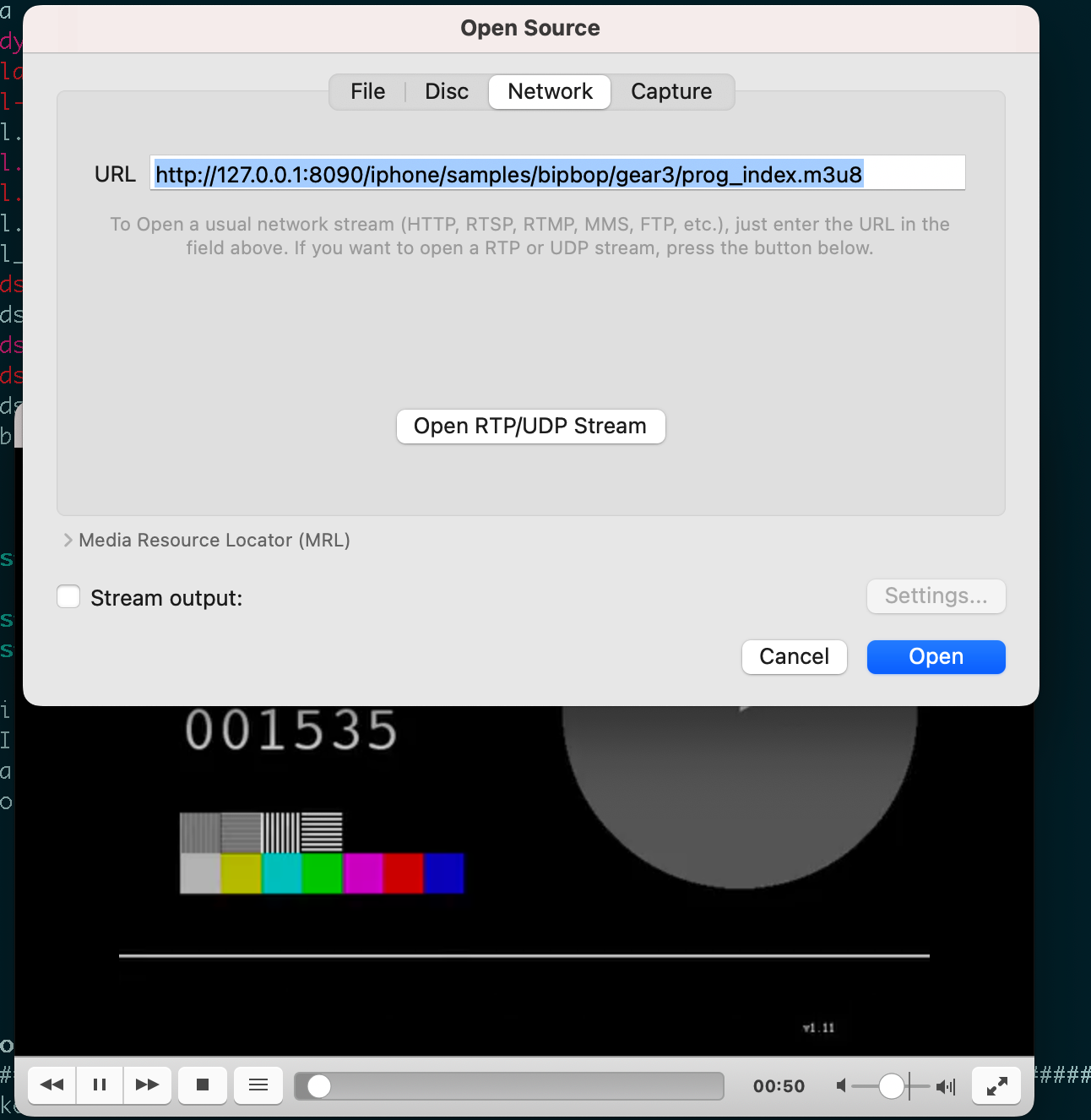一、关于MobileNetv2
MobileNet网络专注于移动端、嵌入式或IoT设备的轻量级CNN网络。MobileNet网络使用深度可分离卷积(Depthwise Separable Convolution)的思想在准确率小幅度降低的前提下,大大减小了模型参数与运算量。并引入宽度系数 α和分辨率系数 β使模型满足不同应用场景的需求。
因为MobileNet网络中Relu激活函数处理低维特征信息时会存在大量的丢失,所以MobileNetV2网络提出使用倒残差结构(Inverted residual block)和Linear Bottlenecks来设计网络,以提高模型的准确率,且优化后的模型更小。

二、MobileNetV2模型构建
使用MindSpore定义MobileNetV2网络的各模块时需要继承mindspore.nn.Cell。Cell是所有神经网络(Conv2d等)的基类。
__all__ = ['MobileNetV2', 'MobileNetV2Backbone', 'MobileNetV2Head', 'mobilenet_v2']
def _make_divisible(v, divisor, min_value=None):
if min_value is None:
min_value = divisor
new_v = max(min_value, int(v + divisor / 2) // divisor * divisor)
if new_v < 0.9 * v:
new_v += divisor
return new_v
class GlobalAvgPooling(nn.Cell):
"""
Global avg pooling definition.
Args:
Returns:
Tensor, output tensor.
Examples:
>>> GlobalAvgPooling()
"""
def __init__(self):
super(GlobalAvgPooling, self).__init__()
def construct(self, x):
x = P.mean(x, (2, 3))
return x
class ConvBNReLU(nn.Cell):
"""
Convolution/Depthwise fused with Batchnorm and ReLU block definition.
Args:
in_planes (int): Input channel.
out_planes (int): Output channel.
kernel_size (int): Input kernel size.
stride (int): Stride size for the first convolutional layer. Default: 1.
groups (int): channel group. Convolution is 1 while Depthiwse is input channel. Default: 1.
Returns:
Tensor, output tensor.
Examples:
>>> ConvBNReLU(16, 256, kernel_size=1, stride=1, groups=1)
"""
def __init__(self, in_planes, out_planes, kernel_size=3, stride=1, groups=1):
super(ConvBNReLU, self).__init__()
padding = (kernel_size - 1) // 2
in_channels = in_planes
out_channels = out_planes
if groups == 1:
conv = nn.Conv2d(in_channels, out_channels, kernel_size, stride, pad_mode='pad', padding=padding)
else:
out_channels = in_planes
conv = nn.Conv2d(in_channels, out_channels, kernel_size, stride, pad_mode='pad',
padding=padding, group=in_channels)
layers = [conv, nn.BatchNorm2d(out_planes), nn.ReLU6()]
self.features = nn.SequentialCell(layers)
def construct(self, x):
output = self.features(x)
return output
class InvertedResidual(nn.Cell):
"""
Mobilenetv2 residual block definition.
Args:
inp (int): Input channel.
oup (int): Output channel.
stride (int): Stride size for the first convolutional layer. Default: 1.
expand_ratio (int): expand ration of input channel
Returns:
Tensor, output tensor.
Examples:
>>> ResidualBlock(3, 256, 1, 1)
"""
def __init__(self, inp, oup, stride, expand_ratio):
super(InvertedResidual, self).__init__()
assert stride in [1, 2]
hidden_dim = int(round(inp * expand_ratio))
self.use_res_connect = stride == 1 and inp == oup
layers = []
if expand_ratio != 1:
layers.append(ConvBNReLU(inp, hidden_dim, kernel_size=1))
layers.extend([
ConvBNReLU(hidden_dim, hidden_dim,
stride=stride, groups=hidden_dim),
nn.Conv2d(hidden_dim, oup, kernel_size=1,
stride=1, has_bias=False),
nn.BatchNorm2d(oup),
])
self.conv = nn.SequentialCell(layers)
self.cast = P.Cast()
def construct(self, x):
identity = x
x = self.conv(x)
if self.use_res_connect:
return P.add(identity, x)
return x
class MobileNetV2Backbone(nn.Cell):
"""
MobileNetV2 architecture.
Args:
class_num (int): number of classes.
width_mult (int): Channels multiplier for round to 8/16 and others. Default is 1.
has_dropout (bool): Is dropout used. Default is false
inverted_residual_setting (list): Inverted residual settings. Default is None
round_nearest (list): Channel round to . Default is 8
Returns:
Tensor, output tensor.
Examples:
>>> MobileNetV2(num_classes=1000)
"""
def __init__(self, width_mult=1., inverted_residual_setting=None, round_nearest=8,
input_channel=32, last_channel=1280):
super(MobileNetV2Backbone, self).__init__()
block = InvertedResidual
# setting of inverted residual blocks
self.cfgs = inverted_residual_setting
if inverted_residual_setting is None:
self.cfgs = [
# t, c, n, s
[1, 16, 1, 1],
[6, 24, 2, 2],
[6, 32, 3, 2],
[6, 64, 4, 2],
[6, 96, 3, 1],
[6, 160, 3, 2],
[6, 320, 1, 1],
]
# building first layer
input_channel = _make_divisible(input_channel * width_mult, round_nearest)
self.out_channels = _make_divisible(last_channel * max(1.0, width_mult), round_nearest)
features = [ConvBNReLU(3, input_channel, stride=2)]
# building inverted residual blocks
for t, c, n, s in self.cfgs:
output_channel = _make_divisible(c * width_mult, round_nearest)
for i in range(n):
stride = s if i == 0 else 1
features.append(block(input_channel, output_channel, stride, expand_ratio=t))
input_channel = output_channel
features.append(ConvBNReLU(input_channel, self.out_channels, kernel_size=1))
self.features = nn.SequentialCell(features)
self._initialize_weights()
def construct(self, x):
x = self.features(x)
return x
def _initialize_weights(self):
"""
Initialize weights.
Args:
Returns:
None.
Examples:
>>> _initialize_weights()
"""
self.init_parameters_data()
for _, m in self.cells_and_names():
if isinstance(m, nn.Conv2d):
n = m.kernel_size[0] * m.kernel_size[1] * m.out_channels
m.weight.set_data(Tensor(np.random.normal(0, np.sqrt(2. / n),
m.weight.data.shape).astype("float32")))
if m.bias is not None:
m.bias.set_data(
Tensor(np.zeros(m.bias.data.shape, dtype="float32")))
elif isinstance(m, nn.BatchNorm2d):
m.gamma.set_data(
Tensor(np.ones(m.gamma.data.shape, dtype="float32")))
m.beta.set_data(
Tensor(np.zeros(m.beta.data.shape, dtype="float32")))
@property
def get_features(self):
return self.features
class MobileNetV2Head(nn.Cell):
"""
MobileNetV2 architecture.
Args:
class_num (int): Number of classes. Default is 1000.
has_dropout (bool): Is dropout used. Default is false
Returns:
Tensor, output tensor.
Examples:
>>> MobileNetV2(num_classes=1000)
"""
def __init__(self, input_channel=1280, num_classes=1000, has_dropout=False, activation="None"):
super(MobileNetV2Head, self).__init__()
# mobilenet head
head = ([GlobalAvgPooling(), nn.Dense(input_channel, num_classes, has_bias=True)] if not has_dropout else
[GlobalAvgPooling(), nn.Dropout(0.2), nn.Dense(input_channel, num_classes, has_bias=True)])
self.head = nn.SequentialCell(head)
self.need_activation = True
if activation == "Sigmoid":
self.activation = nn.Sigmoid()
elif activation == "Softmax":
self.activation = nn.Softmax()
else:
self.need_activation = False
self._initialize_weights()
def construct(self, x):
x = self.head(x)
if self.need_activation:
x = self.activation(x)
return x
def _initialize_weights(self):
"""
Initialize weights.
Args:
Returns:
None.
Examples:
>>> _initialize_weights()
"""
self.init_parameters_data()
for _, m in self.cells_and_names():
if isinstance(m, nn.Dense):
m.weight.set_data(Tensor(np.random.normal(
0, 0.01, m.weight.data.shape).astype("float32")))
if m.bias is not None:
m.bias.set_data(
Tensor(np.zeros(m.bias.data.shape, dtype="float32")))
@property
def get_head(self):
return self.head
class MobileNetV2(nn.Cell):
"""
MobileNetV2 architecture.
Args:
class_num (int): number of classes.
width_mult (int): Channels multiplier for round to 8/16 and others. Default is 1.
has_dropout (bool): Is dropout used. Default is false
inverted_residual_setting (list): Inverted residual settings. Default is None
round_nearest (list): Channel round to . Default is 8
Returns:
Tensor, output tensor.
Examples:
>>> MobileNetV2(backbone, head)
"""
def __init__(self, num_classes=1000, width_mult=1., has_dropout=False, inverted_residual_setting=None, \
round_nearest=8, input_channel=32, last_channel=1280):
super(MobileNetV2, self).__init__()
self.backbone = MobileNetV2Backbone(width_mult=width_mult, \
inverted_residual_setting=inverted_residual_setting, \
round_nearest=round_nearest, input_channel=input_channel, last_channel=last_channel).get_features
self.head = MobileNetV2Head(input_channel=self.backbone.out_channel, num_classes=num_classes, \
has_dropout=has_dropout).get_head
def construct(self, x):
x = self.backbone(x)
x = self.head(x)
return x
class MobileNetV2Combine(nn.Cell):
"""
MobileNetV2Combine architecture.
Args:
backbone (Cell): the features extract layers.
head (Cell): the fully connected layers.
Returns:
Tensor, output tensor.
Examples:
>>> MobileNetV2(num_classes=1000)
"""
def __init__(self, backbone, head):
super(MobileNetV2Combine, self).__init__(auto_prefix=False)
self.backbone = backbone
self.head = head
def construct(self, x):
x = self.backbone(x)
x = self.head(x)
return x
def mobilenet_v2(backbone, head):
return MobileNetV2Combine(backbone, head)
加载ImageNet数据上预训练的MobileNetv2进行Fine-tuning,只训练最后修改的FC层,并在训练过程中保存Checkpoint。预训练模型资源下载。
def switch_precision(net, data_type):
if ms.get_context('device_target') == "Ascend":
net.to_float(data_type)
for _, cell in net.cells_and_names():
if isinstance(cell, nn.Dense):
cell.to_float(ms.float32)
三、垃圾分类数据集
数据集下载:pip install download
from download import download
# 下载data_en数据集
url = "https://ascend-professional-construction-dataset.obs.cn-north-4.myhuaweicloud.com:443/MindStudio-pc/data_en.zip"
path = download(url, "./", kind="zip", replace=True)

数据集标签:
# 垃圾分类数据集标签,以及用于标签映射的字典。
garbage_classes = {
'干垃圾': ['贝壳', '打火机', '旧镜子', '扫把', '陶瓷碗', '牙刷', '一次性筷子', '脏污衣服'],
'可回收物': ['报纸', '玻璃制品', '篮球', '塑料瓶', '硬纸板', '玻璃瓶', '金属制品', '帽子', '易拉罐', '纸张'],
'湿垃圾': ['菜叶', '橙皮', '蛋壳', '香蕉皮'],
'有害垃圾': ['电池', '药片胶囊', '荧光灯', '油漆桶']
}
class_cn = ['贝壳', '打火机', '旧镜子', '扫把', '陶瓷碗', '牙刷', '一次性筷子', '脏污衣服',
'报纸', '玻璃制品', '篮球', '塑料瓶', '硬纸板', '玻璃瓶', '金属制品', '帽子', '易拉罐', '纸张',
'菜叶', '橙皮', '蛋壳', '香蕉皮',
'电池', '药片胶囊', '荧光灯', '油漆桶']
class_en = ['Seashell', 'Lighter','Old Mirror', 'Broom','Ceramic Bowl', 'Toothbrush','Disposable Chopsticks','Dirty Cloth',
'Newspaper', 'Glassware', 'Basketball', 'Plastic Bottle', 'Cardboard','Glass Bottle', 'Metalware', 'Hats', 'Cans', 'Paper',
'Vegetable Leaf','Orange Peel', 'Eggshell','Banana Peel',
'Battery', 'Tablet capsules','Fluorescent lamp', 'Paint bucket']
index_en = {'Seashell': 0, 'Lighter': 1, 'Old Mirror': 2, 'Broom': 3, 'Ceramic Bowl': 4, 'Toothbrush': 5, 'Disposable Chopsticks': 6, 'Dirty Cloth': 7,
'Newspaper': 8, 'Glassware': 9, 'Basketball': 10, 'Plastic Bottle': 11, 'Cardboard': 12, 'Glass Bottle': 13, 'Metalware': 14, 'Hats': 15, 'Cans': 16, 'Paper': 17,
'Vegetable Leaf': 18, 'Orange Peel': 19, 'Eggshell': 20, 'Banana Peel': 21,
'Battery': 22, 'Tablet capsules': 23, 'Fluorescent lamp': 24, 'Paint bucket': 25}
数据集:
def create_dataset(dataset_path, config, training=True, buffer_size=1000):
"""
create a train or eval dataset
Args:
dataset_path(string): the path of dataset.
config(struct): the config of train and eval in diffirent platform.
Returns:
train_dataset, val_dataset
"""
data_path = os.path.join(dataset_path, 'train' if training else 'test')
ds = de.ImageFolderDataset(data_path, num_parallel_workers=4, class_indexing=config.class_index)
resize_height = config.image_height
resize_width = config.image_width
normalize_op = C.Normalize(mean=[0.485*255, 0.456*255, 0.406*255], std=[0.229*255, 0.224*255, 0.225*255])
change_swap_op = C.HWC2CHW()
type_cast_op = C2.TypeCast(mstype.int32)
if training:
crop_decode_resize = C.RandomCropDecodeResize(resize_height, scale=(0.08, 1.0), ratio=(0.75, 1.333))
horizontal_flip_op = C.RandomHorizontalFlip(prob=0.5)
color_adjust = C.RandomColorAdjust(brightness=0.4, contrast=0.4, saturation=0.4)
train_trans = [crop_decode_resize, horizontal_flip_op, color_adjust, normalize_op, change_swap_op]
train_ds = ds.map(input_columns="image", operations=train_trans, num_parallel_workers=4)
train_ds = train_ds.map(input_columns="label", operations=type_cast_op, num_parallel_workers=4)
train_ds = train_ds.shuffle(buffer_size=buffer_size)
ds = train_ds.batch(config.batch_size, drop_remainder=True)
else:
decode_op = C.Decode()
resize_op = C.Resize((int(resize_width/0.875), int(resize_width/0.875)))
center_crop = C.CenterCrop(resize_width)
eval_trans = [decode_op, resize_op, center_crop, normalize_op, change_swap_op]
eval_ds = ds.map(input_columns="image", operations=eval_trans, num_parallel_workers=4)
eval_ds = eval_ds.map(input_columns="label", operations=type_cast_op, num_parallel_workers=4)
ds = eval_ds.batch(config.eval_batch_size, drop_remainder=True)
return ds
其中config参数:
# 训练超参
config = EasyDict({
"num_classes": 26,
"image_height": 224,
"image_width": 224,
#"data_split": [0.9, 0.1],
"backbone_out_channels":1280,
"batch_size": 32,
"eval_batch_size": 32,
"epochs": 100,
"lr_max": 0.05,
"momentum": 0.9,
"weight_decay": 1e-4,
"save_ckpt_epochs": 1,
"dataset_path": "./data_en",
"class_index": index_en,
"pretrained_ckpt": "./mobilenetV2-200_1067.ckpt" # mobilenetV2-200_1067.ckpt
})
四、模型推理
下载训练好的MobileNetv2-垃圾分类模型。然后,预测你的图片。
CKPT="save_mobilenetV2_model.ckpt"
def image_process(image):
"""Precess one image per time.
Args:
image: shape (H, W, C)
"""
mean=[0.485*255, 0.456*255, 0.406*255]
std=[0.229*255, 0.224*255, 0.225*255]
image = (np.array(image) - mean) / std
image = image.transpose((2,0,1))
img_tensor = Tensor(np.array([image], np.float32))
return img_tensor
def infer_one(network, image_path):
image = Image.open(image_path).resize((config.image_height, config.image_width))
logits = network(image_process(image))
pred = np.argmax(logits.asnumpy(), axis=1)[0]
print(image_path, class_en[pred])
def infer():
backbone = MobileNetV2Backbone(last_channel=config.backbone_out_channels)
head = MobileNetV2Head(input_channel=backbone.out_channels, num_classes=config.num_classes)
network = mobilenet_v2(backbone, head)
load_checkpoint(CKPT, network)
for i in range(91, 100):
infer_one(network, f'data_en/test/Cardboard/000{i}.jpg')
infer()
五、导出AIR/GEIR/ONNX模型文件
backbone = MobileNetV2Backbone(last_channel=config.backbone_out_channels)
head = MobileNetV2Head(input_channel=backbone.out_channels, num_classes=config.num_classes)
network = mobilenet_v2(backbone, head)
load_checkpoint(CKPT, network)
input = np.random.uniform(0.0, 1.0, size=[1, 3, 224, 224]).astype(np.float32)
# export(network, Tensor(input), file_name='mobilenetv2.air', file_format='AIR')
# export(network, Tensor(input), file_name='mobilenetv2.pb', file_format='GEIR')
export(network, Tensor(input), file_name='mobilenetv2.onnx', file_format='ONNX')
六、资源下载
1.预训练模型MobileNetv2.
2.MobileNetv2-垃圾分类模型下载。



















